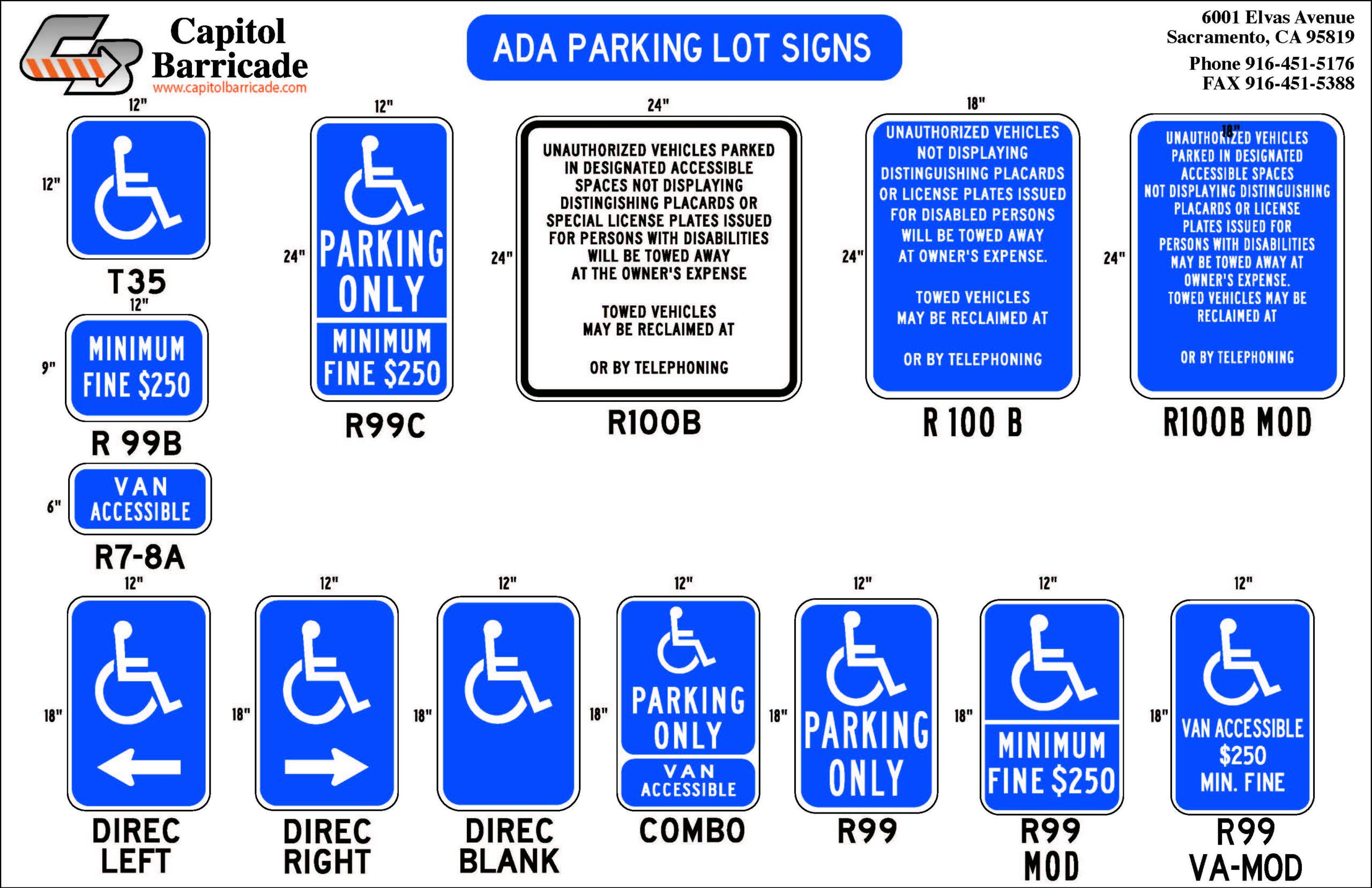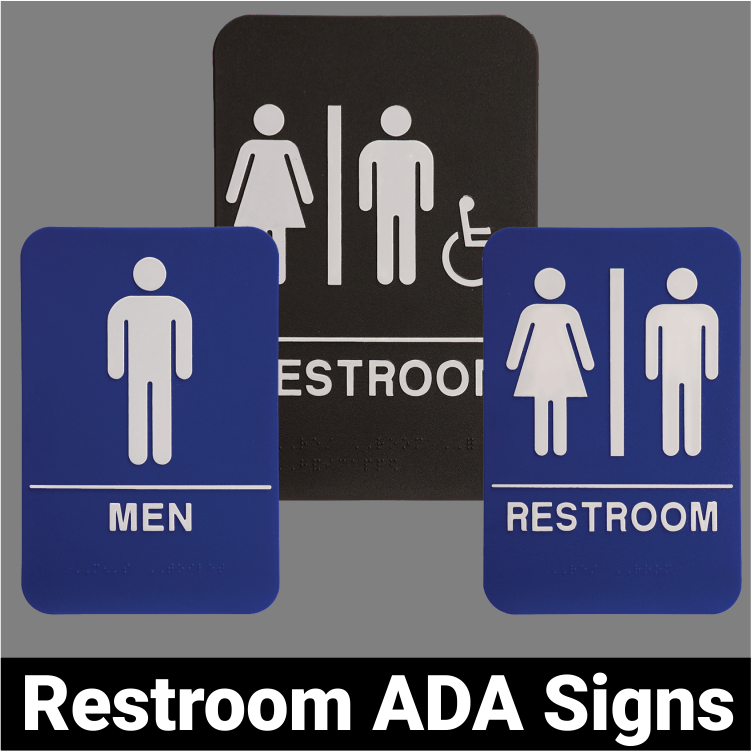Check out the Significance of ADA Signs in Public Spaces
Wiki Article
Checking Out the Secret Features of ADA Signs for Enhanced Ease Of Access
In the realm of ease of access, ADA indications work as quiet yet powerful allies, guaranteeing that spaces are inclusive and accessible for people with impairments. By integrating Braille and tactile aspects, these signs damage obstacles for the visually damaged, while high-contrast color pattern and readable fonts satisfy diverse aesthetic requirements. Furthermore, their tactical placement is not arbitrary yet instead a calculated initiative to help with smooth navigation. Past these features exists a deeper narrative regarding the evolution of inclusivity and the recurring commitment to creating fair areas. What more could these indications signify in our search of global ease of access?Value of ADA Conformity
Guaranteeing conformity with the Americans with Disabilities Act (ADA) is crucial for cultivating inclusivity and equivalent access in public areas and workplaces. The ADA, enacted in 1990, mandates that all public centers, employers, and transportation services fit people with impairments, ensuring they appreciate the very same legal rights and possibilities as others. Compliance with ADA standards not only satisfies lawful obligations however likewise improves a company's reputation by demonstrating its dedication to variety and inclusivity.One of the crucial elements of ADA compliance is the execution of accessible signage. ADA indicators are made to make sure that individuals with impairments can quickly navigate via buildings and spaces.
Additionally, adhering to ADA regulations can minimize the danger of lawful repercussions and possible fines. Organizations that fail to follow ADA guidelines may deal with charges or lawsuits, which can be both damaging and economically burdensome to their public photo. Therefore, ADA compliance is important to fostering a fair setting for everyone.
Braille and Tactile Aspects
The unification of Braille and responsive components into ADA signs embodies the principles of availability and inclusivity. It is usually positioned beneath the matching text on signage to guarantee that people can access the details without visual help.Tactile aspects expand past Braille and consist of elevated signs and characters. These parts are designed to be discernible by touch, permitting people to determine space numbers, toilets, exits, and various other critical locations. The ADA establishes details standards pertaining to the dimension, spacing, and positioning of these responsive aspects to optimize readability and guarantee uniformity across various settings.

High-Contrast Color Pattern
High-contrast shade plans play a critical function in enhancing the exposure and readability of ADA signs for individuals with aesthetic disabilities. These schemes are essential as they maximize the difference in light reflectance between message and background, making sure that signs are easily noticeable, even from a range. The Americans with Disabilities Act (ADA) mandates making use of details color contrasts to accommodate those with minimal vision, making it an important facet of compliance.The efficiency of high-contrast colors depends on their capability to stick out in various lighting problems, my website including dimly lit settings and locations with glare. Generally, dark text on a light background or light message on a dark history is utilized to accomplish optimal contrast. Black text on a yellow or white background offers a raw aesthetic distinction that helps in fast acknowledgment and understanding.

Legible Fonts and Text Dimension
When considering the design of ADA signs, the selection of understandable font styles and suitable message size can not be overemphasized. The Americans with Disabilities Act (ADA) mandates that font styles need to be not italic and sans-serif, oblique, manuscript, highly decorative, or of uncommon kind.According to ADA standards, the minimum message height must be 5/8 inch, and it must boost proportionally with seeing range. Consistency in text size contributes to a natural aesthetic experience, aiding individuals in navigating settings effectively.
Additionally, spacing between lines and letters is indispensable to clarity. Adequate spacing prevents personalities from showing up crowded, improving readability. By adhering to these requirements, developers can dramatically improve accessibility, guaranteeing that signage offers its designated function for all individuals, regardless of their aesthetic capabilities.
Effective Placement Techniques
Strategic placement of ADA signage is essential for optimizing ease of access and guaranteeing conformity with lawful criteria. Properly positioned signs direct people with impairments properly, facilitating navigating in public spaces. Secret factors to consider consist of height, exposure, and proximity. ADA guidelines stipulate that signs must be mounted at a height between 48 to 60 inches from the ground to guarantee they are within the line of sight for both standing and seated people. This standard elevation array is important for inclusivity, making it possible for this post wheelchair individuals and people of differing elevations to gain access to information easily.Furthermore, signs should be put surrounding to the lock side of doors to allow very easy recognition before access. Consistency in indication placement throughout a center enhances predictability, reducing complication and enhancing general customer experience.

Verdict
ADA indicators play an essential function in promoting access by incorporating features that address the needs of people with specials needs. Integrating Braille and responsive components guarantees important details is easily accessible to the visually damaged, while high-contrast color design and readable sans-serif typefaces boost presence across numerous lighting problems. Reliable positioning strategies, such as ideal placing heights and strategic places, further assist in navigation. These aspects jointly cultivate an inclusive atmosphere, emphasizing the significance of ADA conformity in guaranteeing equivalent access for all.In the realm of ease of access, ADA signs serve as silent yet powerful allies, guaranteeing that areas are accessible and comprehensive for people with specials needs. The ADA, enacted in 1990, mandates that all public centers, employers, and transport services fit individuals with disabilities, guaranteeing they take pleasure in the exact same rights and chances as others. ADA Signs. ADA indications are designed to guarantee that individuals with specials needs can quickly navigate via buildings and areas. ADA guidelines stipulate that signs ought to be placed at an elevation between 48 to 60 inches from the ground to guarantee they are within the line of view for both standing and seated individuals.ADA indications play a vital role in promoting accessibility by integrating functions that address the needs of individuals with handicaps
Report this wiki page